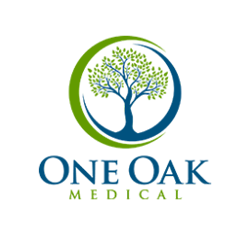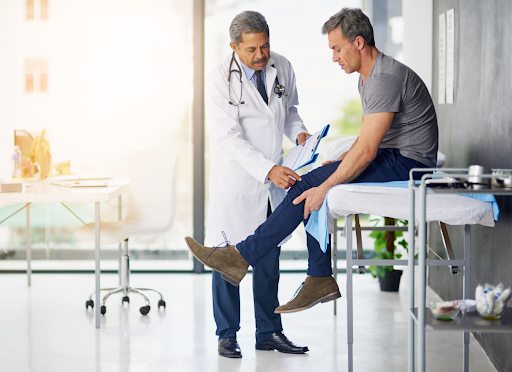Common Treatments for Orthopedic Pain: Do You Need a Doctor?
One day, you’re swinging a tennis racket or reaching for a cereal box, and the next, you’re holding your elbow in agonizing pain, wondering why it started hurting in the first place. The hip aches, the knee locks, the back complains every time you stand up, and somehow, it all starts to feel normal. But it shouldn’t be. You shouldn’t have to ice your wrist after typing or avoid stairs like they’re booby-trapped. Things like flexibility, comfort, and freedom to move are vital to your long-term quality of life.
Orthopedic pain affects people of all ages and walks of life, from weekend warriors to busy parents to retirees who just want to garden without a side of back pain. Whether it’s a joint dislocation, rotator cuff injury, or a knee that’s had enough, there’s no shame in getting help. In fact, that’s where the real healing begins. When you know what’s going on beneath the surface regarding your ligaments, tendons, cartilage, and bones, you can start to take charge. That’s where One Oak Medical comes in.
Defining Orthopedic Pain
Orthopedic pain refers to any discomfort rooted in the musculoskeletal system. It covers everything from your bones, joints, muscles, nerves, ligaments, and tendons. Whether it’s a pulled hamstring, an inflamed biceps tendon, or the creeping tension in your neck and shoulders, this type of pain can chip away at your quality of life. It can stem from an acute injury, such as a sprain or strain, or creep in over time due to conditions like psoriatic arthritis, bursitis, or normal wear and tear. Knowing the underlying causes and how to spot orthopedic pain can help you get more effective treatment.
Signs You’re Suffering From an Orthopedic Condition
How do you know when your body’s signals mean more than just a rough night’s sleep or a day of bad posture? Let’s break it down. These signs often go hand in hand with orthopedic issues that could benefit from proper therapy or treatment. Here’s what to look out for:
Lingering Pain
Identifying when pain graduates from a minor inconvenience to a more serious orthopedic condition is crucial to your long-term prognosis. Pain lets you know something needs attention, whether it’s a throbbing heel after a long walk or a sharp jolt through your elbow when lifting your child. It can be dull, stabbing, constant, or triggered by motion. Left unchecked, it becomes a constant companion and spreads throughout your joints.
Stiffness
If your joints feel more like rusty hinges than moving parts, that’s a red flag you shouldn’t ignore. Stiffness often follows inflammation in areas like the knee, shoulder joint, or wrist after an injury or a lifetime of extended use. Limited mobility in the morning or after periods of inactivity could point to orthopedic issues like rheumatoid arthritis or early-stage joint degeneration.
Tenderness
A single touch shouldn’t hurt and have you recoiling in pain. But when it does, especially around muscles, soft tissue, or joints, inflammation is usually at play. Conditions involving the bursa, such as bursitis or damage to ligaments or cartilage, can make certain areas exquisitely sensitive, even to light pressure.
Loss of Flexibility
Daily tasks become a challenge when your range of motion takes a nosedive. Everything from that once-easy stretch to tying your shoe becomes a major hurdle. Whether it’s your back, neck, or thumb that’s locked up, stiffness plus pain equals restricted flexibility and often stems from underlying tissue damage or joint wear.
Common Treatments for Orthopedic Pain
There is no one-size-fits-all treatment for orthopedic pain, but you do have options that can help improve your quality of life. From over-the-counter remedies to outpatient surgery, orthopedic doctors weigh a mix of therapies to match your symptoms, medical history, and lifestyle. Some methods relieve pain while promoting healing. The overall goal remains to get you moving pain-free and make you an active participant in your life once more.
Medications
Let’s be honest; when the pain hits, reaching for a pill bottle can feel like the first (and only) step. And sometimes, it helps. Analgesics like acetaminophen can dull the ache. Nonsteroidal anti-inflammatory drugs (NSAIDs), such as ibuprofen, reduce inflammation. But you often need a more targeted approach for the medicine to work its magic.
For more persistent pain, a physician might recommend a corticosteroid injection, topical medication, or even antidepressants for nerve-related issues. However, medicine works best as part of a broader pain management plan, not as a one-stop solution.
Physical Therapy
Physical therapy is where recovery gets real, and you can see marked improvements in your range of motion. Guided exercises and hands-on techniques from a physical therapist or occupational therapist rebuild strength, flexibility, and function. Whether you’re recovering from surgery, managing arthritis, or rehabbing after a torn rotator cuff, physical therapy focuses on movement and not just pain relief. It’s how you retrain your body, regain control, and avoid future injury.
Lifestyle Changes
Sometimes, the biggest results come from the smallest shifts. A healthier lifestyle reduces stress on joints and promotes healing. That could mean losing weight to ease pressure on your knees, swimming to stay active without strain, or adopting a healthy diet to fight inflammation. Relaxation techniques, aerobic exercise, strength training, proper shoes, and even improved sleep habits help your body stay strong and help keep your body pain-free.
Surgical Options
When conservative options fall short, surgery can offer the relief you’ve been looking for. With minimally invasive procedures, such as arthroplasty or ligament repair, One Oak Medical provides major relief with less downtime for our patients. Whether it’s a hip replacement, a torn meniscus, or ACL surgery, our orthopedic surgeons work with your primary care team to develop a surgical plan that supports your recovery and long-term prognosis.
Schedule Your Next Orthopedic Consultation With One Oak Medical Today
You don’t have to put up with the discomfort, the stiffness, and the frustration of not being able to do the things you love. At One Oak Medical, we’re your team of orthopedic doctors, physician assistants, and therapists who are excited to help you feel better. Whether you’re in Jersey or just across the river, we’re close by and ready to provide support that’s honest, effective, and rooted in real experience.
We take the time to listen to your medical history across every joint, flare-up, and moment when you thought, “This isn’t right.” We believe in healing through information, motion, and care. So if your elbow screams during tennis, your back pain won’t quit, or your knee clicks like a metronome, it’s time to get it checked out. Book your next appointment with One Oak Medical, and let’s get back to the business of living pain-free.

